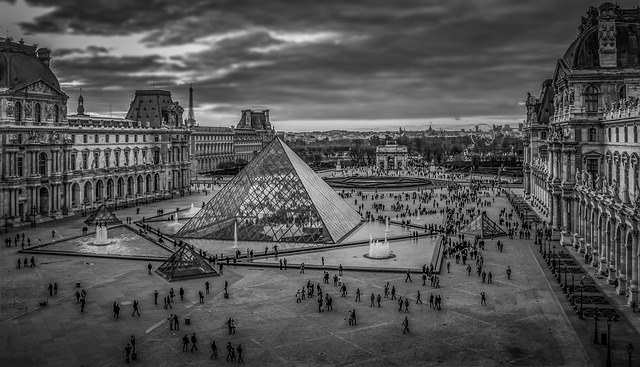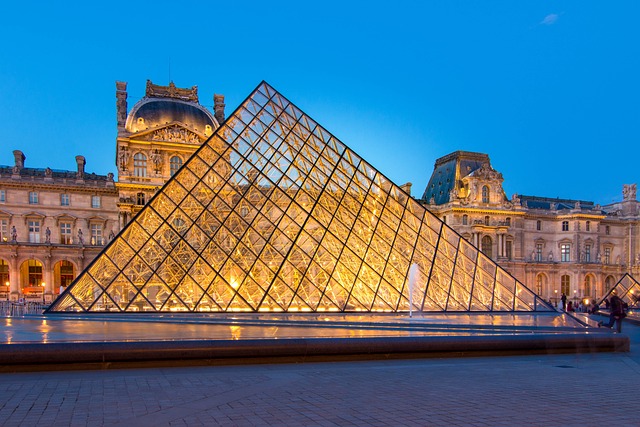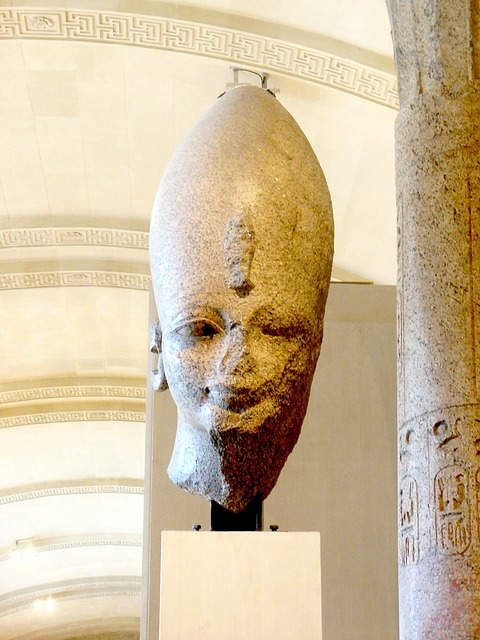Exploring the Stories Behind the Louvre’s Masterpieces
The Louvre Museum, an emblem of art and culture, stands as one of the most visited and storied institutions in the world. Nestled in the heart of Paris, the museum houses a staggering 38,000 objects, spanning from ancient civilizations to the 19th century. Among these treasures are masterpieces that not only exemplify artistic brilliance but also carry rich narratives, often revealing the complexities of history, society, and the human experience. In this article, we will delve into the captivating stories behind some of the Louvre’s most renowned artworks, offering insights into the context and significance that frame their existence.
The Mona Lisa: A Smile Across Centuries
Perhaps the most famous painting of all time, Leonardo da Vinci’s Mona Lisa has captivated audiences since it was first unveiled. Painted in the early 16th century, this exquisite portrait features a woman with an enigmatic smile that has invited endless speculation regarding her identity and emotional state. Many art historians believe the subject is Lisa Gherardini, a Florentine woman, commissioned by her husband, Francesco del Giocondo, leading to the painting’s alternate name, La Gioconda.
However, the story of the Mona Lisa extends beyond its subject. Da Vinci employed chiaroscuro—a technique contrasting light and shadow—to achieve a lifelike quality that adds depth and intrigue. The painting’s theft in 1911 heightened its allure; it disappeared from the Louvre and was recovered two years later, further cementing its status as a cultural icon. The painting’s mysterious qualities, coupled with its history, underscore why it remains a focal point of art appreciation.
The Winged Victory of Samothrace: A Symbol of Triumph
Standing majestically at the top of the Daru staircase in the Louvre, the Winged Victory of Samothrace is a Hellenistic sculpture that celebrates victory in battle. Crafted around the 2nd century BC, this masterpiece embodies the spirit of strength and grandeur, depicting the Greek goddess Nike alighting on the prow of a ship. The statue was discovered on the island of Samothrace in 1863 and has since become an emblem of flourishing beauty amid the tumult of human strife.
The sculpture’s dynamic pose, coupled with the flowing drapery, conveys an impression of movement that captures the moment of descent. As viewers gaze upon this sculpture, they are not only witnessing an artistic achievement but also a symbol of victory closely tied to naval battles of the time. Each crack and sculpted contour invites interpretations of victory’s transient nature and its correlation with human perseverance.
The Venus de Milo: The Beauty of Imperfection
Discovered in 1820 on the Aegean island of Milos, the Venus de Milo is an ancient Greek statue that represents the goddess Aphrodite (Venus in Roman mythology). Characterized by its missing arms, this remarkable work is believed to date back to the Hellenistic period, around 150-125 BC. Although the statue is incomplete, the grace of its form and the clarity of its lines have earned it canonical status in the art world.
The ambiguity surrounding its original sculptural intention sparks discussions about beauty and imperfection. Art historians speculate whether it was created by the renowned sculptor Alexandros of Antioch, as suggested by an inscription found at the site. The enduring fame of the Venus de Milo lies in its ability to evoke fascination about beauty ideals in ancient cultures. Each observer brings their interpretations, often illuminating the tension between wholeness and the power of absence.
The Coronation of Napoleon: A Reflection of Power
Painted by Jacques-Louis David, The Coronation of Napoleon is a monumental work that captures the coronation of Napoleon Bonaparte in Notre-Dame Cathedral in 1804. This vast canvas, measuring over 10 feet by 20 feet, details the pomp and circumstance of the event in vivid colors and intricate details. David, a staunch supporter of Napoleon, intended for the painting to legitimize his rule by portraying an air of majesty and divine right.
The work illuminates the complex interplay between art and politics. Napoleon crowns his wife, Josephine, a detail that signifies the intertwining of personal and political authority. The vast array of figures in the painting—a mix of church officials, military leaders, and dignitaries—serves to elevate Napoleon’s status, asserting his role not merely as a ruler but as a figure of transformative power within France and beyond. Viewers are left to ponder the nature of legacy and the markers of authority.
The Code of Hammurabi: The Birth of Law
One of the most significant artifacts in the Louvre is the Code of Hammurabi, a basalt stele engraved with one of the earliest codes of law in history, established by the Babylonian king Hammurabi around 1754 BC. This exquisite artifact meters approximately seven feet tall and features cuneiform script outlining legal standards and punishments, asserting the importance of justice and societal order.
The stele depicts Hammurabi receiving the laws from the sun god Shamash, symbolizing divine approval and establishing the notion that laws are as essential as governance itself. This moment in history translates into contemporary discussions about jurisprudence and moral codes. As viewers study this piece, they begin to understand the origins of legal structure and the embedded sense of fairness that still resonates through modern civilizations.
Liberty Leading the People: A Symbol of Revolution
Eugène Delacroix’s Liberty Leading the People, created in 1830, serves as a tribute to the July Revolution in France. This allegorical painting presents the figure of Liberty as a woman, personifying freedom and revolution, leading a diverse group of revolutionaries towards a brighter future. The work marries classical styles with romanticism, employing dynamic forms and emotive expressions to evoke the tumult of the uprising.
The painting showcases how art can capture the fervor of social movements. Liberty’s outstretched arm symbolizes leadership and hope, while the juxtaposition of the fallen bodies and the rise of a new order emphasizes the cost of freedom. This rich narrative, entwined with French nationalism, continues to inspire movements for democracy and civil rights, making it a timeless beacon of aspiration.
The Grande Odalisque: Femininity and Exoticism
Jean-Auguste-Dominique Ingres’ Grande Odalisque, painted in 1814, encapsulates the fascination with the “Orient” during the early 19th century. This large-scale work presents a reclining nude woman in a luxurious setting, often interpreted as a symbol of Eastern exoticism and Western fantasy. The odalisque’s elongated proportions and sensuous curves diverge from realism, highlighting the prevailing ideals of beauty and eroticism.
Ingres, known for his precise line work and meticulous detail, drew upon the Romantic movement’s allure of the exotic, tapping into Western imaginations about the East. Critics of the time debated the piece’s artistic merit versus its problematic representation of women and cultures. Today, the Grande Odalisque opens dialogues about the complex dynamics of representation, desire, and the politics of the gaze.
Conclusion: The Timeless Dialogue of Art
The Louvre Museum stands as a custodian of masterpieces that each narrate rich stories bound in history, culture, and artistry. From the enigmatic smile of the Mona Lisa to the fierce charge of Liberty, each artwork invites us into a dialogue that transcends time and space. As visitors wander through the museum’s halls, they engage not only with the physicality of these creations but also with the narratives of human experience that they encapsulate. In exploring the stories behind these masterpieces, we gain a deeper appreciation for the myriad ways art reflects and shapes our world. Each painting, sculpture, and artifact concludes a chapter of humanity’s unfolding story, compelling scholars and admirers alike to ponder the past, present, and future.


